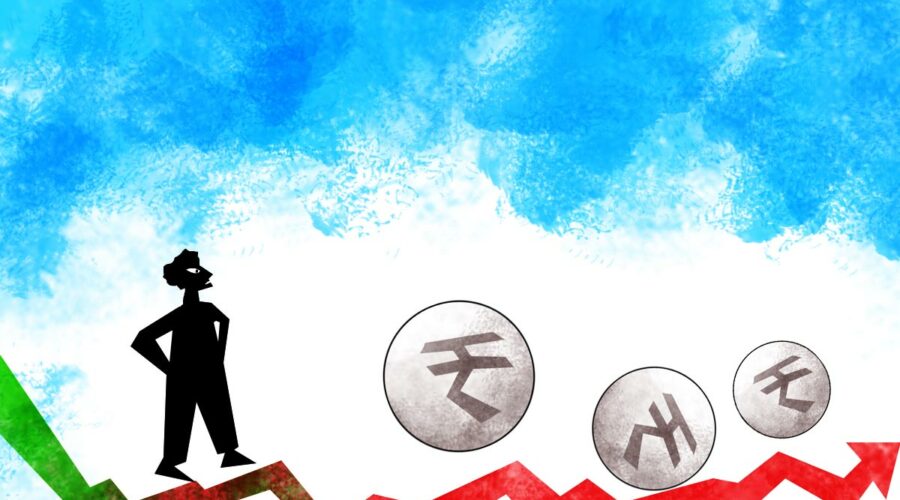‘Over The Long Term, Equities Are The Best Inflation Hedge’
‘Recent underperformance notwithstanding, equities should constitute a major part of investors’ financial portfolio.’
Over the past few months, global markets have danced to the tune of central bank moves.
Manishi Raychaudhuri, Asia-Pacific equity strategist at BNP Paribas, in conversation with Puneet Wadhwa/Business Standard, says he expects the current volatility in Asian and Indian equities to continue over the foreseeable time horizon.
Do you think the risks to markets are mounting and rallies will eventually get sold into?
The current volatility in Asian and Indian equities is likely to continue over the foreseeable time horizon.
Accelerated monetary policy tightening by global central banks and the just-commenced quantitative tightening (QT) by the US Federal Reserve could continue to drive fund outflows from emerging markets (EMs).
Spike in fuel prices, accelerated by persistent geopolitical tensions, could be an additional headwind for India, widening trade deficit and depreciating the currency in the near term.
We anticipate some degree of stability in the markets in the last quarter of 2022.
By then, the most severe Fed rate hikes — a series of 50-basis point (bp) increases — should likely be behind us and so would the initial jolt of QT.
Have the markets overreacted to the central bank moves?
BNP Paribas economists estimate three 50-bp hikes by the Fed between June and September.
The market is gradually coming to terms with the narrative of structural inflation and the Fed’s articulated intention to control inflation by any means.
However, QT, which the Fed had engaged in only once before, could depress financial assets further.
Do you think foreign institutional investors (FIIs) have actually ‘oversold’ India?
Since October 2021, FIIs have sold $28 billion Indian equities — about 0.8 per cent of India’s market capitalisation (m-cap).
This is higher than the previous episodes of sharp FII selling (0.4-0.5 per cent of m-cap) and almost as high as the selling during the global financial crisis.
Global EM investors are significantly underweight on India relative to the MSCI EM benchmark — a situation they had reached only twice before, over the past 20 years.
This does not imply that FII selling would reverse in the near term as fundamental headwinds still persist, but it does provide a rationale for FII’s appetite for India to return once the dust settles.
Until when will domestic institutional investors (DIIs) and retail investors continue to support in the backdrop of persistent FII selling?
Retail investors are under-invested in equities, recent exuberance notwithstanding.
Over the long term, the participation of DIIs and retail in Indian equities should remain robust.
That said, increasing interest rates could make fixed-income investments relatively attractive in the near term — a potential headwind for retail participation.
Do you think the government is running out of ammunition to fight macro headwinds?
Over the past two-three years, the central government has been working on a strategy to boost domestic manufacturing and capital expenditure.
An ambitious infrastructure investment plan — combining central government spending, state government spending, and public-private partnership — is part of that strategy.
Investors are keen to see a continuance of this investment-boosting strategic thrust.
The major macro headwind centres around inflation, and the Reserve Bank of India’s recent monetary policy stance clearly seeks to contain inflationary pressures.
While fiscal policy may need to align with monetary policy to control inflation, we do not expect curtailment of the government’s capex plan.
What has been your investment strategy?
Rising interest rates are usually good for banks’ interest margins and we are playing that theme through private sector banks.
Depreciation of the rupee is a tailwind for information technology (IT) services companies and front-line IT companies are reporting robust deal wins.
In our Asian model portfolio, we also have select consumer discretionary companies — primarily market-leading automotive and energy companies — as buoyancy in fuel prices seems set to last longer.
We are currently overweight on India and have maintained this stance since late last year.
What is the ideal portfolio construct you advise at this juncture?
What we have seen recently is a coordinated decline in financial assets — fixed income and equity.
Except commodities, more or less all asset classes have underperformed.
Over the long term, equities are the best inflation hedge, recent underperformance notwithstanding, and should constitute a major part of investors’ financial portfolio.
Does it make sense to diversify into other markets?
Geographical diversification is an appropriate risk-mitigation strategy, especially during the present time of heightened volatility.
Asian currencies are depreciating against the US dollar and investing in the developed markets, albeit in select sectors, could be a suitable diversification plan at this juncture.
Feature Presentation: Aslam Hunani/Rediff.com
Source: Read Full Article

